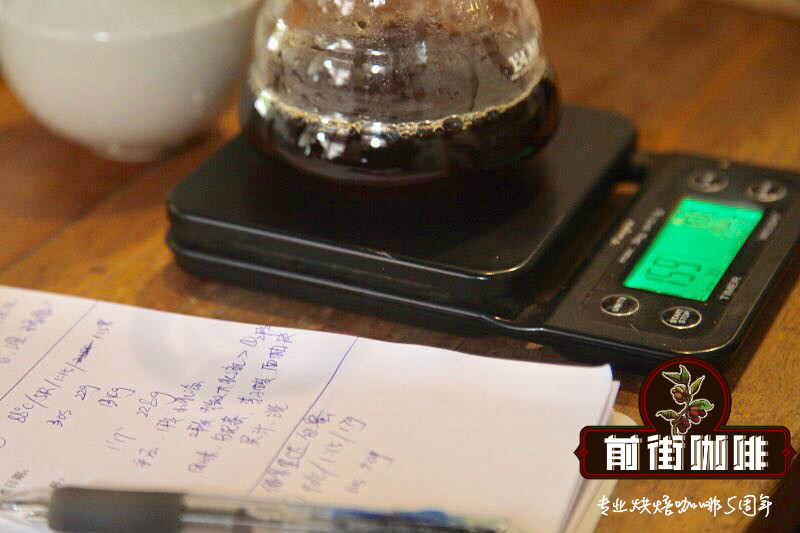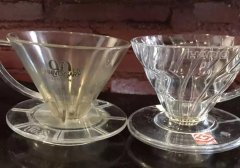What is the way coffee beans are fermented? What are the ways to deal with coffee beans?

Professional coffee knowledge exchange more coffee bean information please follow the coffee workshop (Wechat official account cafe_style)
During the natural fermentation of coffee, different biodegradation procedures take place, and enzymes produced by yeasts and bacteria begin to decompose the sugar in the pectin layer. Sugar breaks down lipids, proteins and acids and converts them into alkyd, which changes the smell, color, pH and composition of the pectin layer of coffee beans.
Does the fermented taste of coffee beans indicate poor quality?
The fermentation of raw coffee beans can be divided into dry type and wet type.
Dry fermentation is subdivided into Brazilian style, Yemeni style and Sino-American style.
In the case of Brazilian beans, "dry fermentation" is derived because of the local lack of water, in which the peel is first removed, and then part of the pericarp is put into the fermentation tank for treatment, using the enzymes in the pericarp to play a role. The advantage is that it will have syrup-like sweetness, while medium roasting will have nutty and cocoa aromas. the disadvantage is that if it is not handled properly, it may be accompanied by earthy and musty flavors. if there are too many defective beans with these "polluting aroma", the quality of coffee will be affected naturally, and it will be beaten to commercial beans. But for Yemeni mocha and kabuki beans, dry fermentation produces aromas as soft and palatable as ripe dried fruit and wine because the humidity in Yemen is drier than in Brazil. Central American countries such as Panama are more advanced in dry fermentation than in Brazil.
The fermentation process strictly monitors the enzyme concentration, the content of coffee pulp and the temperature in the fermentation tank to reduce the bad flavor that may be produced in the fermentation process.
But some producing areas are not naturally suitable for dry fermentation (for example, Colombia), so wet fermentation is used in these areas, but some people always think that the taste of wet fermentation is not much different from that of washing, and the flavor is too clean.
And wet fermentation treatment also has disadvantages-butyric acid bacteria and other food spoilage bacteria may appear in the sink, resulting in sour taste; if wet fermentation is handled well, it will show the aroma of coffee; if it is not handled properly, that is the bad taste of the fruit! This phenomenon is quite common in wet fermentation or honey treatment.
The quality of coffee is not a matter of handling, quality control is the key, which is why cup testing is important. Quality control of coffee beans is from planting, harvesting, processing to export, transportation, baking and packaging. Only the extreme requirements of each link can achieve "boutique coffee".
There are two kinds of processing procedures, called tanning and washing. The former is used in Brazil to dry the whole coffee fruit without removing the peel during the whole drying process. After being completely dried, the dried pericarp, inner shell and silver peel are crushed and removed. The product is a tradable raw bean (green bean) that can be bagged for export. Hawaii does not use this approach.
Wash the peel first, remove the colloid wrapped in the inner shell by fermentation, wash it in the sun, and then select and bag it for sale. Most countries produce supple coffee by washing. Hawaii and Colombia are. Then the actual procedure of washing method will be further discussed.
Important Notice :
前街咖啡 FrontStreet Coffee has moved to new addredd:
FrontStreet Coffee Address: 315,Donghua East Road,GuangZhou
Tel:020 38364473
- Prev

V60 and KONO filter cups both belong to tapered filter cups. What's the difference between them?
Usually we make some coffee with obvious flavor, such as Yega Xuefei and Kenya, we mostly choose to use V60 filter cup, but some people will get used to using KONO filter cup, these two kinds of filter cups are conical filter cups, so what's the difference between these two kinds of filter cups? It is mentioned that the flow rate of several commonly seen coffee filter cups is a very interesting result.
- Next

Coffee pull tutorial | how do coffee pull flowers make a Chinese-style "Hua Dan Facebook"?
Today, share a cup of competition-grade coffee pull + carving, Chinese style "Huadan Facebook" every creator is a painter, a cup of espresso plus a cup of milk, can make an ordinary cup of coffee with extremely exquisite patterns. 2018CLAC finals Art bar, this video course is from @ Sanshen baking college, original pull flower: Liu Qiang many beginners
Related
- What is the meaning of lactic acid fermentation with coffee bean treatment?
- How to judge the state of foam by sound?
- How does the latte pull out the unicorn pattern? Come to get for a little trick to improve the flower pull!
- Will flower pulling affect the taste of the latte?
- Do you know the history of coffee?
- The difference between honey treatment and sun washing what is raisin honey treatment?
- What kind of milk can a novice use to make coffee foam to keep the foam longer? The correct method and skills of milking tutorial sharing
- Why do washed coffee beans taste sour? Flavor characteristics of washed Coffee
- Introduction to the skill of how to practice the size and height of water injection around the circle of hand-brewed coffee
- How do beginners practice coffee flower drawing from scratch?

